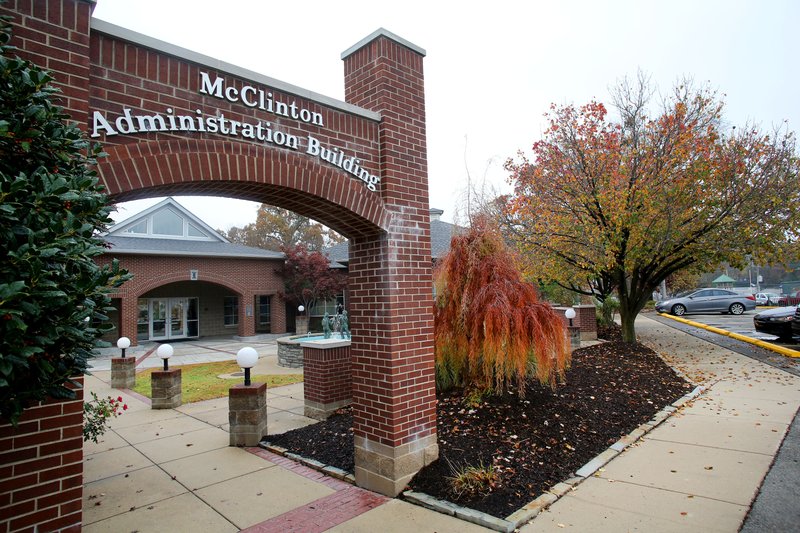FAYETTEVILLE -- The School Board unanimously voted Thursday to switch to an alternate academic calendar in the wake of snow days that sent districts scrambling to make sure they meet LEARNS Act teaching requirements and prepare students for state standardized testing this spring.
Fayetteville has already lost seven days of instruction to snow and ice.
The state Department of Elementary and Secondary Education this week created flexibility, allowing districts to move from the traditional 178-day school year to an hours-based calendar to avoid having to make up snow days at the end of the school year.
The board voted 7-0 to immediately implement the move. But the implementation also depends on the approval of the School District's certified and classified personnel policy committees by Feb. 5, said Claire Wilkinson, the district's general counsel. Personnel policy can't be changed mid-year unless the personnel policy committees also approve it, Wilkinson said.
The change would add 35 minutes to the end of the school day for grades 5-12. Kindergarten through fourth grade aren't affected, Superintendent John Mulford said, adding the district will be flexible with those who have scheduling conflicts.
"I have no doubt that we'll be able to execute adding 35 minutes to a day," said Megan Tullock, a board member. "But I think that there are kids and families that this will significantly impact. I think the accommodations that we make to support those kids and families are just very, very important to keep in mind."
The switch would only amend this year's calendar, Wilkinson said.
Starting by Feb. 5 allows the district to get in all the additional minutes to make up for the seven snow days, said Alan Wilbourn, the district's executive director of communications.
The LEARNS Act requires public school districts to have 178 days or 1,068 hours of in-person, on-site learning to receive funding for the state's $50,000 minimum teacher salaries. Under LEARNS, virtual education days -- also known as alternative methods of instruction (AMI) -- don't count toward the 178-day requirement, and using them could endanger state funding for teachers.
Districts face tacking on snow days at the end of the school year -- in June, for most districts -- after state standardized tests in the spring. That means fewer instruction days before the tests.
BOUNDARIES RECOMMENDATION
During a work session before the regular meeting, Mulford gave the board his recommendation for a plan that could eventually move middle school attendance boundaries, alleviate overcrowding at McNair Middle School and help the district in other ways.
District leaders and consulting firm MGT worked on the project, and Mulford has presented five scenarios to the board for shifting the boundaries. The district reached out to parents, the community, teachers and students to gauge what's important to them and what they'd like to see.
Mulford emphasized developing feeder patterns that keep students together as they advance from elementary, to middle school and on to junior high. Other priorities are increasing proximity to schools for students and parents and improving transportation to and from schools in the district, Mulford said, as well as having three middle schools and three junior highs. Fayetteville currently has two junior highs and three middle schools.
The concept Mulford endorsed, called B2, involves building a new Woodland Junior High School and converting Colbert Middle School, which opened in the fall, to a junior high. The current Woodland would be converted into a middle school, with Ramay Junior High eventually having to be relocated.
The board is expected to vote next month on Mulford's boundaries recommendation and on whether to spend $4.6 million to buy about 28 acres at the corner of Joyce Boulevard and Crossover Road to build the new Woodland. The land plat lists the address as 3134 E. Joyce Blvd. Mulford said the district made an offer on the property and is in the 90-day due diligence phase. The offer is contingent on board approval, Mulford said.
The overall project is expected to take three years, giving people time to adjust to the coming changes, Mulford and the board noted. Mulford previously said forging the three middle school-three junior high system wouldn't immediately solve McNair's crowding but would provide light at the end of the tunnel.
"It gives a pretty big time horizon for folks to get used to it," board member Tim Hudson said.
Building a new school can be paid for through second-lien bonds, which allow the district to keep the current voter-approved millage rate, Mulford said.
The board voted last month to leave middle school boundaries unchanged for the 2024-25 school year.
If the board approves the B2 scenario, Woodland construction would start this year, with completion planned for the 2027-28 school year, Mulford said. When Woodland is finished, the district will look to build a new Ramay -- which will remain where it is until then.
Under the B2 plan, here's how the boundaries and projected enrollment numbers break down, according to the district:
Holcomb and Owl Creek elementary students would funnel into Holt Middle School, then to the converted Colbert Junior High. The combined middle school and junior high enrollment (fifth through eighth grades) would be 462.
Asbell, Butterfield and Vandergriff elementaries would feed into McNair and on to Woodland, for a middle school and junior high enrollment of 577.
Happy Hollow, Leverett, Root and Washington elementary students would go to the converted Woodland Middle School and on to Ramay. The combined middle school-junior high enrollment would be 610.

